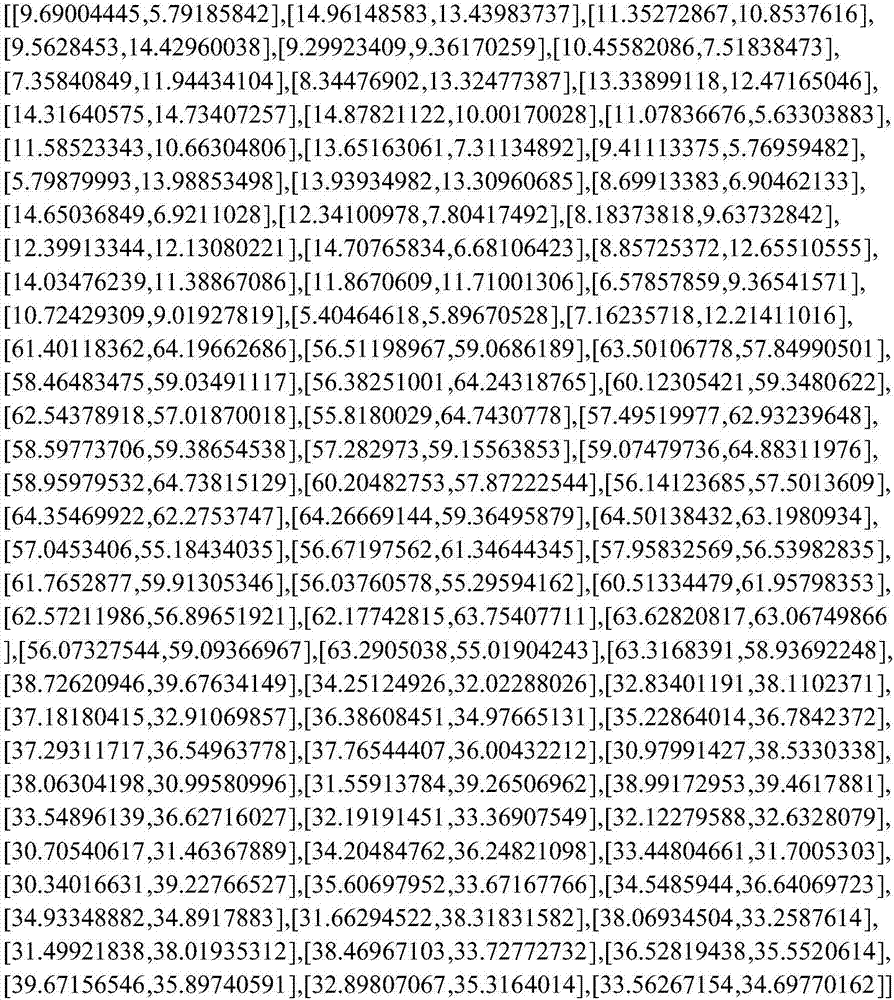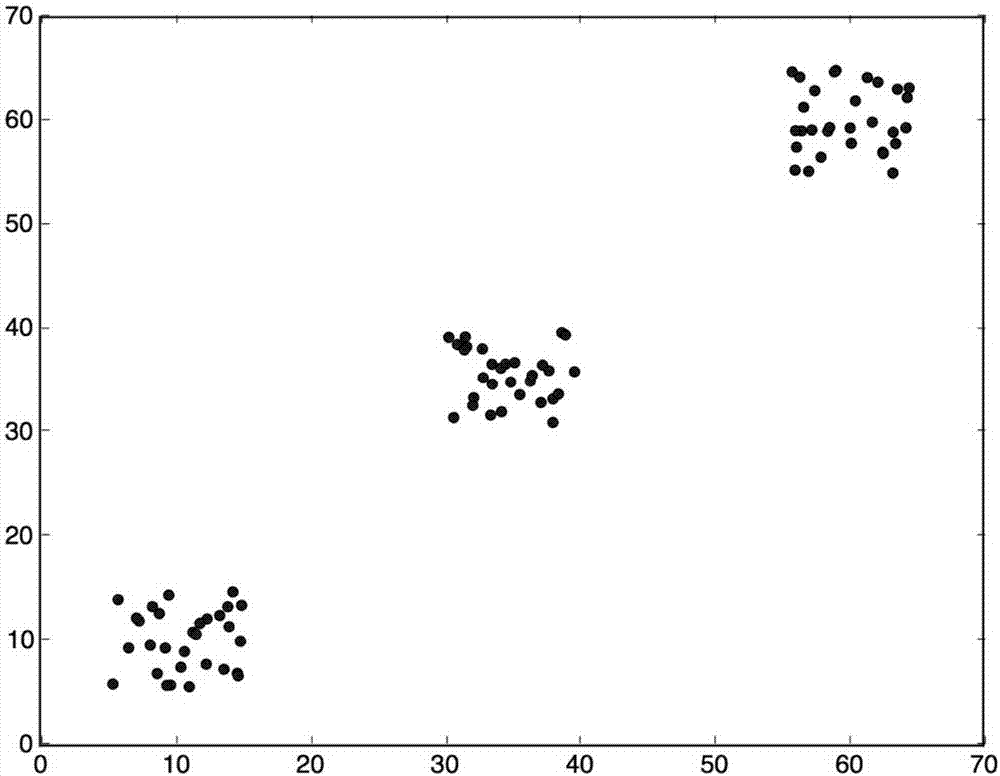Method for automatically identifying optimal K value of elbow rules
An automatic recognition and optimal technology, applied in character and pattern recognition, computer parts, instruments, etc., can solve the problems of low clustering quality, inability to determine the number of clusters in advance, affecting the use and popularization, and reduce dependence. Effect
- Summary
- Abstract
- Description
- Claims
- Application Information
AI Technical Summary
Problems solved by technology
Method used
Image
Examples
Embodiment 1
[0035] Embodiment 1: as Figure 1-5 As shown, a method for automatically identifying the optimal K value in the elbow rule includes the following steps:
[0036] (1) Set the range [1, M] to find the optimal K value in the K-means clustering algorithm;
[0037] (2) Calculate the average degree of distortion corresponding to the number of clusters in the set range;
[0038] (3) Carry out a regularization conversion of 0-10 to the calculated average degree of distortion;
[0039] (4) Encapsulate the average degree of distortion and the range [1, M] after regularization of 0-10 into a data pair;
[0040] (5) Utilize the law of cosines to seek the included angle between the three consecutive data pairs that above-mentioned encapsulation forms;
[0041] (6) Find the smallest included angle;
[0042] (7) Use the smallest included angle to get the optimal K value.
[0043] The specific steps of a method for automatically identifying the optimal K value in the elbow rule are as fo...
example 1
[0057] Example 1: The specific steps of the method for automatically identifying the optimal K value in the elbow rule are as follows:
[0058] Step1. Set the range of the optimal K value to be found in the K-means clustering algorithm Range: [1, 2, ..., M]; specifically:
[0059] Set the range Range to find the optimal K value in the K-means clustering algorithm as: [1, 2, 3, 4, 5, 6, 7, 8, 9, 10];
[0060] Step2, initialize k=1, and generate an average distortion list MDL whose length is M and all elements are 0; specifically:
[0061] Initialize k to 1, that is, k=1; generate an average distortion list MDL whose length is 10 and all elements are 0: MDL=[0,0,0,0,0,0,0,0,0, 0];
[0062] Step3, if k∈Range, execute Step4; if Then skip Step4-Step7 and execute Step8; specifically:
[0063] For example, when k=1, 1 ∈ [1, 2, 3, 4, 5, 6, 7, 8, 9, 10], namely k ∈ Range, execute Step4 (when k=2, 3, 4, 5, 6, 7, 8, 9, 10 are similar to the situation when k=1); for example, when k=...
PUM
 Login to View More
Login to View More Abstract
Description
Claims
Application Information
 Login to View More
Login to View More - R&D
- Intellectual Property
- Life Sciences
- Materials
- Tech Scout
- Unparalleled Data Quality
- Higher Quality Content
- 60% Fewer Hallucinations
Browse by: Latest US Patents, China's latest patents, Technical Efficacy Thesaurus, Application Domain, Technology Topic, Popular Technical Reports.
© 2025 PatSnap. All rights reserved.Legal|Privacy policy|Modern Slavery Act Transparency Statement|Sitemap|About US| Contact US: help@patsnap.com



